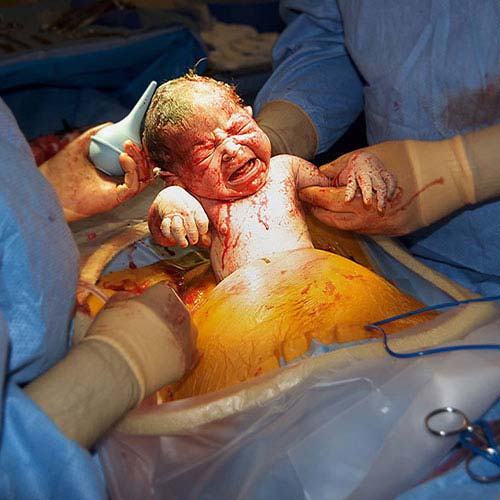Cesarean Section Delivery in Guntur
What Is Cesarean Section or C-section Delivery?
A cesarean section, also called a c-section, is a surgical procedure performed if a vaginal delivery is not possible. During this procedure, the baby is delivered through surgical incisions made in the abdomen and the uterus.
When To Need A Cesarean Delivery?
A cesarean delivery might be planned if a medical reason calls for it, or it might be unplanned and take place during your labor if certain problems arise.
What Can We Expect Before The Cesarean?
If the cesarean delivery is not an emergency, the following procedures will take place.
- You will be asked if you consent to the procedure, and in some hospitals, you might be asked to sign a consent form.
- The anesthesiologist will discuss the type of anesthesia to be used.
- You will have a heart, pulse, and blood pressure monitor applied.
- Hair clipping will be done around the incision area
- A catheter will be inserted to keep your bladder empty.
- Medicine will be put directly into your vein.

What Is The Procedure For Cesarean Or C-section Delivery?
At the start of the procedure, anesthesia will be administered. Your abdomen will then be cleaned with an antiseptic, and you might have an oxygen mask placed over your mouth and nose to increase oxygen to the baby.
The doctor will then make an incision through your skin and into the wall of the abdomen. The doctor might use either a vertical or horizontal incision. (A horizontal incision is also called a bikini incision because it is placed beneath the belly button.) Next, a 3- to 4-inch incision is then made in the wall of the uterus, and the doctor removes the baby through the incisions. The umbilical cord is then cut, the placenta is removed, and the incisions are closed.
How Long Does The Cesarean Or C-section Delivery Procedure Take?
From beginning to end, a cesarean takes anywhere from 1 to 2 hours.
What Happens After The Cesarean Delivery?
Because the cesarean is major surgery, it will take you longer to recover from this type of delivery than it would from a vaginal delivery. Depending on your condition, you will probably stay in the hospital for 2 to 4 days.
